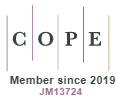In Search of Intellectual Stimulation: Understanding the Relationship Between Motivation, Deep Learning and Stimulation in the Higher Education Classroom
DOI:
https://doi.org/10.15415/jotitt.2017.51001Keywords:
Intellectual stimulation, problem based learning, Active learning, Constructivism, Academic staff developmentAbstract
One of the key educational notions measured in the National Student Survey (NSS) is intellectual stimulation. This study aimed to find out Higher Education (HE) engineering students’ views of intellectual stimulation with a focus on its measurement and supporting its increase within the classroom environment. A quantitative questionnaire acted as a data gathering instrument. The sample comprised 128 students from Edinburgh Napier University (ENU), Scotland. The survey findings showed a positive correlation and positive agreement between the intellectual stimulation (IS), intrinsic motivation (IM) and deep learning approach (DLA) scales. The students’ feedback suggests that implementation of the new intellectual scale based teaching and learning strategy is useful in intellectually stimulated the students and encouraged them to adopt deep learning approach. The findings suggest the design of an intellectually stimulating environment in HE classroom, should consider students’ learning styles, challenge students, allow the provision of timely feedback and provide opportunities to encourage independent thought. Further, the research suggests, the studied institution should encourage staff to consider the intellectual stimulation scale when constructively aligning learning and teaching with an assessment.
Downloads
References
[2] Bolkan, S., Goodboy, A.K. (2012) Behavioral indicators of transformational leadership in the college classroom. http://dx.doi.org/10.1080/17459435.2011.601520.
[3] Bolkan, S. & Goodboy, A.K. (2010) “Transformational Leadership in the Classroom: The Development and Validation of the student Intellectual Stimulation Scale” Communication Reports, 23(2), pp. 91–105. http://dx.doi.org/10.1080/08934215.2010.511399.
[4] Chavan, A. A., Khandagale, V. S. (2014) “Development of Critical Thinking Skill Programme for the Student Teachers of Diploma in Teacher Education colleges”, Issues and Ideas in Education, 2(1), pp.25–37.
[5] Duff, A. (2003) “Quality of learning on an MBA programme: The impact of approaches to learning on academic performance”, Educational Psychology, 23, pp.123–139. http:// dx.doi.org/10.1080/01443410303230.
[6] Duff, A. (2004) “The Revised Approaches to Studying Inventory (RASI) and its use in management education”, Active learning in higher education, 5, pp.56–72.
[7] Edinburgh Napier University (2013) “National Student Survey Update Report: “Areas for Improvement.” Available at: http://staff.napier.ac.uk/services/hr/development/acprofdev/ PL/Documents/NSS improvement 2013 _FINAL COPY.pdf.
[8] Edinburgh Napier University, (2014) NSS website. Available at: http://www. thestudentsurvey.com/the_nss.html [Accessed October 2, 2014].
[9] Entwistle, N. (1988) Styles of Learning and Teaching,
[10] Entwistle, N., Hanley, M., Hounsell, D. (1979) “Identifying distinctive approaches to studying”, Higher Education, 8, pp.365–380.
[11] Gupta, S.C., Kapoor, V.K. (2007) “Fundamentals of Applied Statistics”, Sultan Chand & Sons.
[12] Hair, J.F., Black, W.C., Babin, B.J., and Anderson, R. E., Hair, J.F., Black, W.C., Babin, B.J., and Anderson, R. E. (2009) “Multivariate Data Analysis - A Global Perspective”, New Jersey: Pearson Education Inc.
[13] Hetland, H., Sandal, G. (2003) “Transformational leadership in Norway; outcome and personality correlate”, European Journal of Work and Organizational Psychology, 12(2), pp.147–170. http://dx.doi.org/10.1080/13594320344000057.
[14] Krouk, B.I., Member, S. & Zhuravleva, O.B. (2009) “Dynamic Training Elements in a Circuit Theory Course to Implement a Self-Directed Learning Process”, , 52(3), pp.394– 399. http://dx.doi.org/10.1109/TE.2008.930091.
[15] Lu, H. et al. (2007) “The Relationship of Kolb Learning Styles, Online Learning Behaviors and Learning Outcomes”, Educational Technology & Society, 10(4), pp.187–196.
[16] Pintrich, Paul, R. et al., (1991) “Manual for the Use of the Motivated Strategies for Learning Questionnaire”, (MSLQ). , p.75.
[17] Project, E., (2005) “Shortened Experiences of Teaching and Learning Questionnaire ( SETLQ ). , 44, pp.1–3.
[18] Prosser, M., Trigwell, K. (1999) “Understanding learning and teaching: The experience in highereducation”, Milton Keynes, England: SRHE,Open University Press.
[19] Savin-Baden, M. (2003) “Facilitating Problem-based Learning: Illuminating perspectives”, Buckingham: SRHE/Open University Press.
[20] Shahzad, S., Zareen, H. (2011) “Perception of intellectual stimulation, creativity and innovation among health managers working in tertiary level hospitals”, Journal of Ayub Medical College Abbottabad, 23(3), pp.86–90.
[21] Wolters, C. A. (1998) “Self-regulated learning and college students’ regulation of motivation”, Journal of Educational Psychology, 90, pp.224–235. http://dx.doi. org/10.1037/0022-0663.90.2.224
Downloads
Published
How to Cite
Issue
Section
License
Articles in Journal on Today's Ideas - Tomorrow's Technologies (J. Today’s Ideas - Tomorrow’s Technol.) by Chitkara University Publications are Open Access articles that are published with licensed under a Creative Commons Attribution- CC-BY 4.0 International License. Based on a work at https://jotitt.chitkara.edu.in. This license permits one to use, remix, tweak and reproduction in any medium, even commercially provided one give credit for the original creation.
View Legal Code of the above mentioned license, https://creativecommons.org/licenses/by/4.0/legalcode
View Licence Deed here https://creativecommons.org/licenses/by/4.0/
 |
Journal on Today's Ideas - Tomorrow's Technologies by Chitkara University Publications is licensed under a Creative Commons Attribution 4.0 International License. Based on a work at https://jotitt.chitkara.edu.in |











